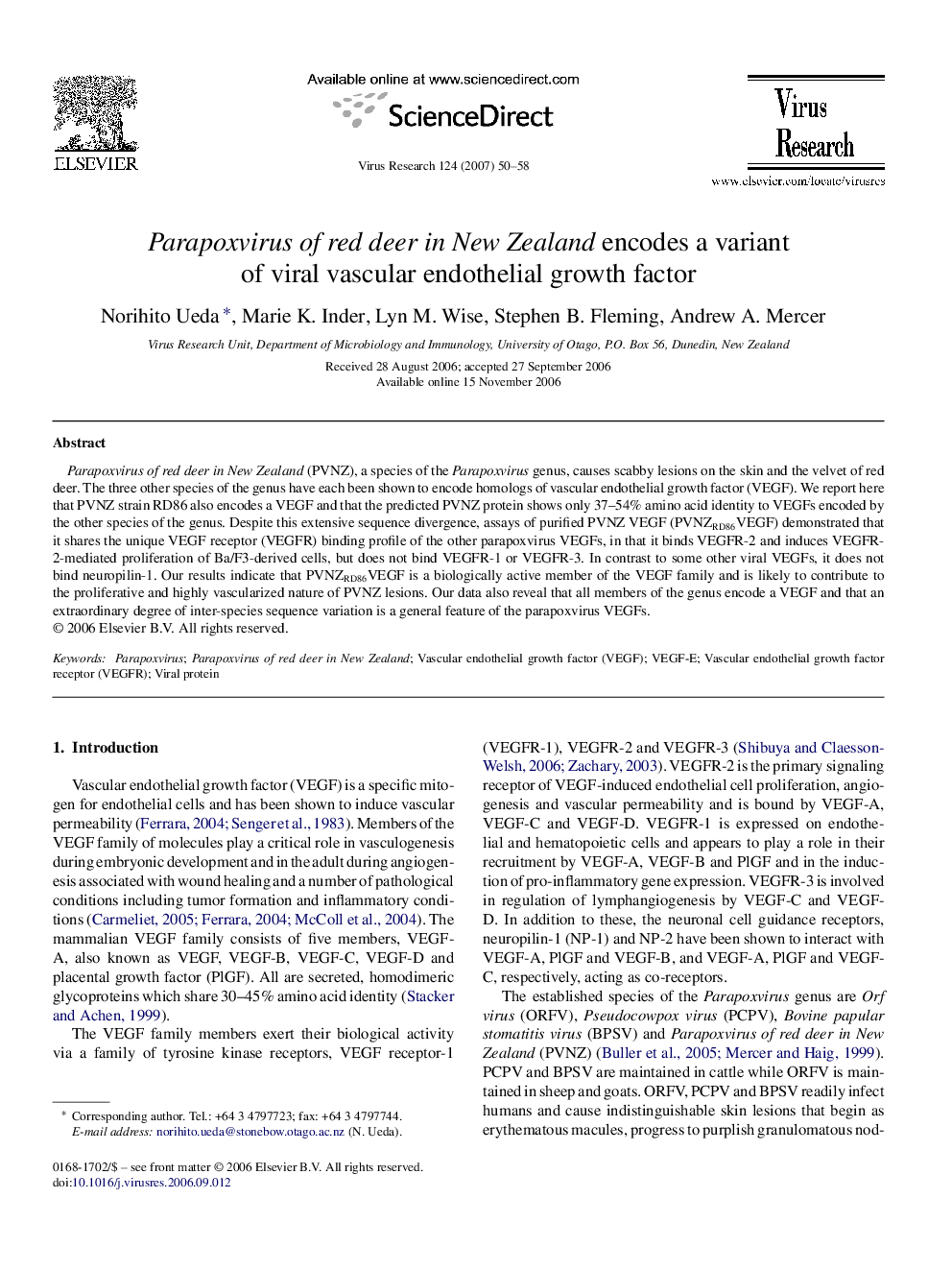| Article ID | Journal | Published Year | Pages | File Type |
|---|---|---|---|---|
| 3430974 | Virus Research | 2007 | 9 Pages |
Parapoxvirus of red deer in New Zealand (PVNZ), a species of the Parapoxvirus genus, causes scabby lesions on the skin and the velvet of red deer. The three other species of the genus have each been shown to encode homologs of vascular endothelial growth factor (VEGF). We report here that PVNZ strain RD86 also encodes a VEGF and that the predicted PVNZ protein shows only 37–54% amino acid identity to VEGFs encoded by the other species of the genus. Despite this extensive sequence divergence, assays of purified PVNZ VEGF (PVNZRD86VEGF) demonstrated that it shares the unique VEGF receptor (VEGFR) binding profile of the other parapoxvirus VEGFs, in that it binds VEGFR-2 and induces VEGFR-2-mediated proliferation of Ba/F3-derived cells, but does not bind VEGFR-1 or VEGFR-3. In contrast to some other viral VEGFs, it does not bind neuropilin-1. Our results indicate that PVNZRD86VEGF is a biologically active member of the VEGF family and is likely to contribute to the proliferative and highly vascularized nature of PVNZ lesions. Our data also reveal that all members of the genus encode a VEGF and that an extraordinary degree of inter-species sequence variation is a general feature of the parapoxvirus VEGFs.
